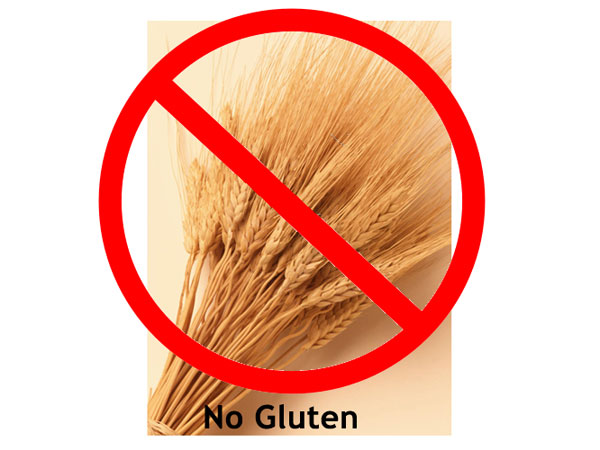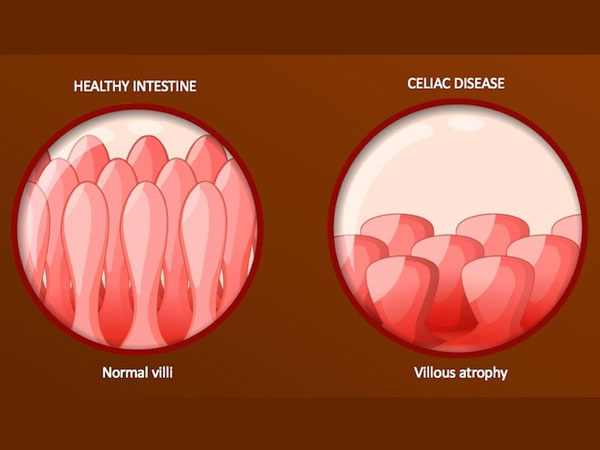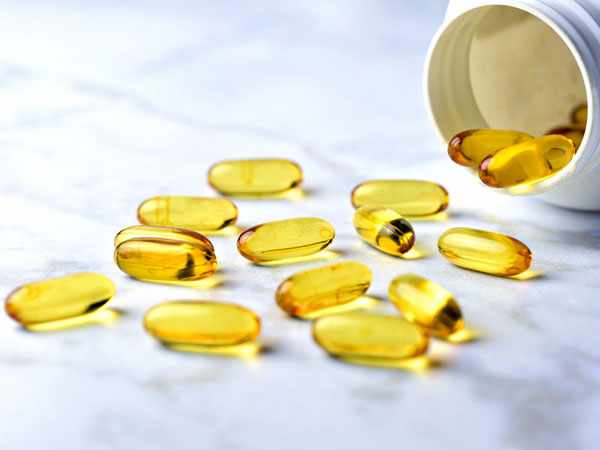Just In
- 9 hrs ago

- 10 hrs ago

- 13 hrs ago

- 13 hrs ago

Don't Miss
- Movies
 Arti Singh-Dipak Chauhan Wedding: Priyanka Chahar Choudhary-Ankit Gupta Steal Show With Their Stunning Looks
Arti Singh-Dipak Chauhan Wedding: Priyanka Chahar Choudhary-Ankit Gupta Steal Show With Their Stunning Looks - News
 MEA Dismisses US Human Rights Report On Manipur As 'Biased And Misinformed'
MEA Dismisses US Human Rights Report On Manipur As 'Biased And Misinformed' - Finance
 1:5 & 1:2 Split, Rs 6/Sh Dividend: Fertilizer Stock Coming Up With 600% Payout; Record, Payment Dates Fixed
1:5 & 1:2 Split, Rs 6/Sh Dividend: Fertilizer Stock Coming Up With 600% Payout; Record, Payment Dates Fixed - Sports
 SRH vs RCB: 'Statpadder' Virat Kohli faces Fans Wrath after 118.3 Strike Rate
SRH vs RCB: 'Statpadder' Virat Kohli faces Fans Wrath after 118.3 Strike Rate - Automobiles
 Royal Enfield Unveils Revolutionary Rentals & Tours Service: Check Out All Details Here
Royal Enfield Unveils Revolutionary Rentals & Tours Service: Check Out All Details Here - Technology
 Elon Musk’s X Is Launching a TV App Similar to YouTube for Watching Videos
Elon Musk’s X Is Launching a TV App Similar to YouTube for Watching Videos - Education
 AICTE introduces career portal for 3 million students, offering fully-sponsored trip to Silicon Valley
AICTE introduces career portal for 3 million students, offering fully-sponsored trip to Silicon Valley - Travel
 Escape to Kalimpong, Gangtok, and Darjeeling with IRCTC's Tour Package; Check Itinerary
Escape to Kalimpong, Gangtok, and Darjeeling with IRCTC's Tour Package; Check Itinerary
Ayurvedic Treatment For Celiac Disease
Also known as celiac sprue, celiac disease is an autoimmune digestive disorder. A person with celiac disease is allergic to foods containing gluten (hence also known as gluten-sensitive enteropathy) [1] . Gluten is a form of protein that is found in grains. However, people with celiac disease mostly react to the gluten that is present in barley, rye and wheat.
Although the cause of a person reacting to gluten intake is not specifically known, it is usually attributed to the body's immune system reacting to the gluten present in the person's diet leading to the damage of the villus in the intestine [2] . The top foods that contain gluten are semolina, pasta, oats, bread, noodles, pizza, biscuits and pastries.

Although the rate of this disease was quite low in India in the past, it has however been observed that lately, the rate is doubling every 20 years. This disease is more prevalent in North India (where the staple food is wheat) than in South India [3] .
Read on to know more about this disease, its symptoms and how an Ayurvedic treatment approach can help you deal with this autoimmune ailment.
What Is Celiac Disease?
Being a chronic digestive disorder, celiac disease is said to cause digestive issues due to damage to the lining of the small intestine. When a person is suffering from celiac disease, his or her immune system turns extremely weak causing the disease-fighting white blood cells to attack its own tissue [4] . Whenever there is gluten ingestion, it triggers the white blood cells to attack the lining of the small intestine. This ailment results in malabsorption of nutrients and minerals.

When an immunological reaction to gluten occurs, the inner lining of the small intestine gets damaged. In children, this disease can lead to stunted growth and short stature as an adult [5] . Many herbal remedy experts believe that as this ailment is a multi-symptom disorder. Ayurvedic supplements can be used to get relief from the various symptoms in a natural manner.
Symptoms Of Celiac Disease [6]
- Weight loss
- Diarrhoea
- Fatigue
- Skin rashes
- Abdominal pain
- Stomach bloating
- Decreased absorption leading to weak bones and anaemia
- Tingling sensation in the hands and legs

Ayurvedic Perspective Of Celiac Disease
In terms of Ayurveda, celiac disease indicates an imbalance of certain body energies that result in the immunity and digestive system turning extremely weak [7] . For treating celiac disease, Ayurveda believes in using herbs that are immunomodulators [8] . These aim towards balancing the immune system and also reviving the villi of intestines. Ayurvedic experts say that when one begins their treatment, the initial stages would require the person to completely abstain from gluten products. However, gradually with proper treatment, one can add gluten into their diet.
Ayurvedic treatment for celiac disease is aimed at correcting the abnormal immune system. Proper detoxification of the body also helps in getting rid of several diseases. Ayurveda categorizes celiac disease under Grahani. This is because it is believed to have been caused due to an abnormality in the Agni (digestive power) of the human body [9] . Here, Grahani is the container whereas Agni is the content. If either of this is disturbed, the other is bound to be disturbed as well.
When Agni is strong, the villi are strong and healthy. They maintain complete coordination and are able to perform the actions of digestion, absorption and assimilation perfectly. In the case of imbalance in the Agni, the functioning of the villi are affected causing either gluten enteropathy or non-tropical celiac sprue. Gluten being heavy, sticky, oily and dull in nature [10] results in low Agni, which eventually leads to the production of Ama.
Ayurvedic experts recommend the following for people suffering from the celiac disease [11] :
- Avoid heavy, oily foods and foods containing gluten.
- Regularly drink freshly prepared buttermilk spiced with ginger, cumin and curry leaves. This improves Agni and enhances absorption.
- Eat foods that are light and easily digestible such as green gram soups, rice porridge, etc. As you find that your digestive capacity is increasing, you can slowly start introducing solid foods.
- Drink water boiled with coriander seeds, cumin and ginger powder.
- Eat pomegranate and bael fruit regularly.
-
Ayurvedic Treatment For Celiac Disease
The following lists some of the best Ayurvedic herbs that can treat the problem of gluten intolerance in quite an effective manner.
-
Kutki (Picrorhiza kurroa)
Kutki is an Ayurvedic herb that finds use in the treatment of several medical problems. This herb possesses hepatoprotective properties and hence can turn out to be quite useful in improving the condition of the liver [12] . Untreated celiac disease can cause serious liver issues such as fatty liver disease and severe liver failure. It is important that patients suffering from celiac are cared for and treated for their liver too.

Kutki can be highly beneficial in this aspect. Studies have revealed that the rhizome of this plant has immense antibiotic properties. Kutki is considered as one of the major components of arogyavardhini [13] (an effective Ayurvedic preparation especially for liver illnesses).
-
Giloy (Tinospora cordifolia)
Giloy is highly effective in strengthening the response of the immune system, thus helping it fight against infections. This Ayurvedic herb helps in making the body resistant to different types of infections [14] . It is very important that the immunity of the patient suffering from celiac disease is strengthened. Research data reveal that this magical herb had shown inhibition of infections for people administered with different doses of this herb.
-
Vaividang (Embelia ribes)
Vaividang is an Ayurvedic herb that improves the way your immune system responses when fighting against foreign particles. This herb works wonderfully in improving the overall efficiency of digestion. When a person suffers from celiac disease, his or her overall digestive system becomes weak resulting in the body failing to absorb the nutrients from the food [15] . Using Vaividang improves the ease with which the nutrients are absorbed.
-
Dry ginger
Dry ginger has been widely used for the treatment of various kinds of medical ailments. This spice is wonderful when aiding better food digestion. It also helps in good absorption of different nutrients [16] . People who have difficulty digesting gluten will be able to make the best use of this herb.
Lifestyle Changes And Remedies For Celiac Disease
Incorporate the following lifestyle changes and remedies to prevent celiac disease from ruining your life:
1. Gluten-free diet
The most obvious remedy is eliminating anything that contains gluten (for instance, wheat products). It can get difficult to stay away from all gluten-containing products and hence you need to be aware of the contents of what you eat [17] . This is so because almost all grain and bread products contain gluten, including ice cream, ketchup, desserts, soy sauce, baked goods, etc.

The best way to ensure that you stay away from gluten products is to always check labels on all your food items followed by exploring gluten-free brands. Always ask at restaurants for a gluten-free menu. A general rule of thumb is to indulge in foods like fruits, meat, poultry and vegetables and to stay away from processed or unnatural foods.
2. Papain supplements
Papain supplements [18] are capable of stimulating enzymes in the small intestine that can determine the presence of gluten, in turn, reducing the immune system response. These supplements are especially beneficial for those who do not wish to drastically bring their gluten intake under check through a complete change in diet. However, it is not guaranteed that these supplements could completely eliminate the effects of celiac disease.
3. Yoghurt
Yoghurt can stimulate beneficial bacteria and hence promote the healing of the digestive tract [19] . Doctors generally ask patients suffering from celiac disease to increase their intake of yoghurt. Consumption of yoghurt is all the more important for people who have been unaware that they are suffering from this ailment for long.
4. Fish oil
Intake of fish oil ensures that your intestines do not become inflamed [20] . Fish oil acts as a coating for the intestinal lining. This is considered good as it can prevent a flare-up of celiac symptoms in case one consumes gluten accidentally.

5. Vitamins and minerals
If you have been put on any kind of supplements (such as iron, calcium, vitamin D, K, B12, zinc, etc.), then ensure that they are gluten-free.
6. Horsetail tea
Horsetail tea is known for its ability to reduce the inflammation of the digestive tract and the intestines. It can also boost the strength of the digestive system [21] . This way the system is less sensitive to gluten.
7. Herbal treatment
Goldenseal and olive leaf extracts can regulate and protect the immune system and hence they are widely used in the treatment of celiac disease [22] . Herbal remedies are known to reduce the autoimmune effects on the small intestine. Chamomile is another great herb that aids the functioning of the digestive system.
- [1] Holtmeier, W., & Caspary, W. F. (2006). Celiac disease.Orphanet journal of rare diseases,1, 3.
- [2] Barker, J. M., & Liu, E. (2008). Celiac disease: pathophysiology, clinical manifestations, and associated autoimmune conditions.Advances in pediatrics,55, 349–365.
- [3] Ramakrishna B. S. (2011). Celiac disease: can we avert the impending epidemic in India?.The Indian journal of medical research,133(1), 5–8.
- [4] Gujral, N., Freeman, H. J., & Thomson, A. B. (2012). Celiac disease: prevalence, diagnosis, pathogenesis and treatment.World journal of gastroenterology,18(42), 6036–6059.
- [5] Nemet, D., Raz, A., Zifman, E., Morag, H., & Eliakim, A. (2009). Short stature, celiac disease and growth hormone deficiency.Journal of Pediatric Endocrinology and Metabolism,22(10), 979-984.
- [6] Pulido, O., Zarkadas, M., Dubois, S., Macisaac, K., Cantin, I., La Vieille, S., … Rashid, M. (2013). Clinical features and symptom recovery on a gluten-free diet in Canadian adults with celiac disease.Canadian journal of gastroenterology = Journal canadien de gastroenterologie,27(8), 449–453.
- [7] González, T., Larretxi, I., Vitoria, J. C., Castaño, L., Simón, E., Churruca, I., … Lasa, A. (2018). Celiac Male's Gluten-Free Diet Profile: Comparison to that of the Control Population and Celiac Women.Nutrients,10(11), 1713.
- [8] Bascones-Martinez, A., Mattila, R., Gomez-Font, R., & Meurman, J. H. (2013). Immunomodulatory drugs: oral and systemic adverse effects.Medicina oral, patologia oral y cirugia bucal,19(1), e24–e31.
- [9] Ludvigsson, J. F., Card, T., Ciclitira, P. J., Swift, G. L., Nasr, I., Sanders, D. S., & Ciacci, C. (2015). Support for patients with celiac disease: A literature review.United European gastroenterology journal,3(2), 146–159.
- [10] Lebwohl, B., Cao, Y., Zong, G., Hu, F. B., Green, P., Neugut, A. I., … Chan, A. T. (2017). Long term gluten consumption in adults without celiac disease and risk of coronary heart disease: prospective cohort study.BMJ (Clinical research ed.),357, j1892.
- [11] Parzanese, I., Qehajaj, D., Patrinicola, F., Aralica, M., Chiriva-Internati, M., Stifter, S., … Grizzi, F. (2017). Celiac disease: From pathophysiology to treatment.World journal of gastrointestinal pathophysiology,8(2), 27–38.
- [12] Shetty, S. N., Mengi, S., Vaidya, R., & Vaidya, A. D. (2010). A study of standardized extracts of Picrorhiza kurroa Royle ex Benth in experimental nonalcoholic fatty liver disease.Journal of Ayurveda and integrative medicine,1(3), 203–210.
- [13] Kumar, G., Srivastava, A., Sharma, S. K., & Gupta, Y. K. (2012). Safety evaluation of an Ayurvedic medicine, Arogyavardhini vati on brain, liver and kidney in rats.Journal of ethnopharmacology,140(1), 151-160.
- [14] Saha, S., & Ghosh, S. (2012). Tinospora cordifolia: One plant, many roles.Ancient science of life,31(4), 151–159.
- [15] Shirole, R. L., Shirole, N. L., & Saraf, M. N. (2015). Embelia ribes ameliorates lipopolysaccharide-induced acute respiratory distress syndrome.Journal of ethnopharmacology,168, 356-363.
- [16] E, J., R, V., & T, J. Z. (2012). Quality of dry ginger (Zingiber officinale) by different drying methods.Journal of food science and technology,51(11), 3190–3198.
- [17] Itzlinger, A., Branchi, F., Elli, L., & Schumann, M. (2018). Gluten-Free Diet in Celiac Disease-Forever and for All?.Nutrients,10(11), 1796.
- [18] Choi, W. M., Lam, C. L., Mo, W. Y., & Wong, M. H. (2016). Upgrading food wastes by means of bromelain and papain to enhance growth and immunity of grass carp (Ctenopharyngodon idella).Environmental Science and Pollution Research,23(8), 7186-7194.
- [19] Morelli, L. (2014). Yogurt, living cultures, and gut health.The American journal of clinical nutrition,99(5), 1248S-1250S.
- [20] Li, Q., Zhang, Q., Wang, C., Tang, C., Zhang, Y., Li, N., & Li, J. (2011). Fish oil enhances recovery of intestinal microbiota and epithelial integrity in chronic rejection of intestinal transplant.PloS one,6(6), e20460.
- [21] Gründemann, C., Lengen, K., Sauer, B., Garcia-Käufer, M., Zehl, M., & Huber, R. (2014). Equisetum arvense (common horsetail) modulates the function of inflammatory immunocompetent cells.BMC complementary and alternative medicine,14, 283.
- [22] Magrone, T., Spagnoletta, A., Salvatore, R., Magrone, M., Dentamaro, F., Russo, M. A., ... & Jirillo, E. (2018). Olive leaf extracts act as modulators of the human immune response.Endocrine, Metabolic & Immune Disorders-Drug Targets (Formerly Current Drug Targets-Immune, Endocrine & Metabolic Disorders),18(1), 85-93.
-
 healthHaving Chicken Soup At Home Can Cure These Health Issues
healthHaving Chicken Soup At Home Can Cure These Health Issues -
 healthAyurvedic Items To Keep With You While You Are Traveling
healthAyurvedic Items To Keep With You While You Are Traveling -
 healthWhy Morning Is The Best Time To Detox According To Ayurveda?
healthWhy Morning Is The Best Time To Detox According To Ayurveda? -
 healthDurga Puja 2023: Health Benefits of Parijat Leaves And Flowers
healthDurga Puja 2023: Health Benefits of Parijat Leaves And Flowers -
 healthAyurvedic Wisdom: Panchamrit's Surprising Health Benefits
healthAyurvedic Wisdom: Panchamrit's Surprising Health Benefits -
 healthUnveiling the Power of Turmeric Ghee: An Ancient Ayurvedic Secret!
healthUnveiling the Power of Turmeric Ghee: An Ancient Ayurvedic Secret! -
 beautySay Goodbye to Dry and Damaged Hair with These Ayurvedic Remedies!
beautySay Goodbye to Dry and Damaged Hair with These Ayurvedic Remedies! -
 beautyUnlocking Ayurveda's Secrets: Natural Hair Care Tips For Hair Loss
beautyUnlocking Ayurveda's Secrets: Natural Hair Care Tips For Hair Loss -
 beautyHair Loss From Stress? Try These Ayurvedic Remedies
beautyHair Loss From Stress? Try These Ayurvedic Remedies -
 healthFrom Illness To Wellness: Traditional Home Remedies For Dengue That Work
healthFrom Illness To Wellness: Traditional Home Remedies For Dengue That Work -
 healthDoctors Day: The Future of Medicine in India: Top 5 Recent Medical Innovations
healthDoctors Day: The Future of Medicine in India: Top 5 Recent Medical Innovations -
 healthDoctors’ Day: The Early Indian Medicine Inventions; Its Not Just Ayurveda!
healthDoctors’ Day: The Early Indian Medicine Inventions; Its Not Just Ayurveda!


 Click it and Unblock the Notifications
Click it and Unblock the Notifications



